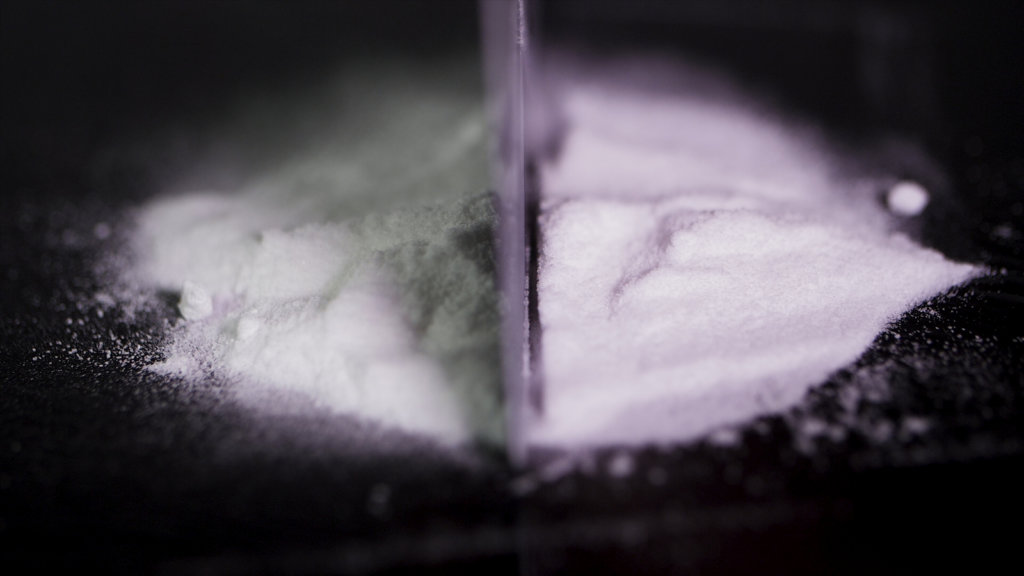
A Comprehensive Opioid List – Narcotics, also known as opiates, opioids or painkillers work in the body by attaching themselves to receptors in the central nervous system (CNS) and as a result, block pain signals. For this reasons, opioids are sometimes prescribed to temporarily treat moderate to severe pain that doesn’t respond well to other pain relievers.
Narcotics are classified as controlled substances by the Drug Enforcement Agency due to their high potential for abuse and addiction and their impact on neurotransmitters (e.g. morphine) and the brain’s reward system overall. They are obtained by prescription or illicitly through drug diversion or the black market.
A Comprehensive Opioid List:
- Opium
- Morphine
- Codeine
- Heroin
- Oxycodone
- Oxymorphone
- Hydrocodone
- Hydromorphone
- Meperidine
- Tramadol
- Methadone
- Buprenorphine
- Fentanyl
- Carfentanil
Opium

Opium is a substance derived from a poppy plant known as Papaver somniferum that consists of opiate alkaloids, substances that serve as the basis for many modern opioid drugs. When distributed illegally, it can be found as a brownish powder, liquid or solid and smoked, taken orally in pill form, or injected when abused.
The alkaloids that opium contain include codeine, morphine, and thebaine, each of which is used in prescription narcotics (oxycodone is derived from thebaine, for example.) Morphine is also the basis for heroin. Of note, opium is less commonly abused in the U.S. than its derivatives such as those noted above.
Morphine (MS Contin, Astramorph, Kadian, Oramorph SR, Avinza, and Arymo ER)
Morphine is derived from the opium poppy plant and used to treat moderate to severe acute (short-term) and chronic (long-term) pain. It can be found in oral and injectable solutions, suppositories and tablets. When abused, it is often injected by those addicted to opioids.
Codeine
Codeine is most often synthesized from its brother alkaloid, morphine, but can also be extracted directly from the opium poppy. In the U.S. it is available by prescription in generic form or in a combination product that also contains acetaminophen (e.g. Tylenol 3.)
As a pain reliever, it is generally considered to be less effective than morphine but is also prescribed for its antitussive (cough-suppressing) properties.
Heroin

Heroin is an illegal semi-synthetic opiate classified by the DEA as a controlled substance, indicating that it has no approved medical purpose, in addition to its high potential for abuse and addiction. Heroin is usually distributed illegally as a whitish, tannish or brownish powder or a sticky black substance called “black tar heroin.”
Heroin can be snorted, smoked, or injected. Heroin use results in an intense and rapid “high” or “rush” and users often cycle between an awake and unconscious state (“on the nod.”)
Oxycodone (OxyContin, Roxicodone, and Oxecta) and Oxycodone Combo Products (Percocet, Roxicet, and Endocet)
Oxycontin is a controversial prescription opioid that is indicated for the treatment of moderate to severe pain. It is often dispensed in tablet form and may be combined with acetaminophen.
Oxycodone is classified by the DEA as a Schedule II controlled substance, which means that it does have an accepted medical purpose. It is also frquently abused, however, for its mind-altering effects, and misuse can rapidly lead to addiction. OxyContin (and other oxycodone products) contain a black-box warning regarding their high diversion, abuse, dependence, addiction, and overdose potential.
Oxymorphone (Opana, Opana ER)
Opana and Opana ER (extended release) were powerful painkillers, the latter being indicated for the around-the-clock treatment of pain. It was only prescribed for instances of high opioid tolerance or when all other methods failed.
Opana was taken off the market by its manufacturer Endo Pharmaceuticals in the summer of 2017, at the behest of the Food and Drug Administration. According to the FDA, Endo’s claim that Opana ER was abuse-resistant was false and that the drug was continually being misused for recreational purposes.
Hydrocodone (Zohydro ER and Hysingla ER, Vicodin, Lorcet, Lortab, and Norco)
Hydrocodone is the top-prescribed and most regularly diverted and abused opioid drug. It is highly addictive and classified as a Schedule II controlled substance.
In addition to being an effective painkiller, hydrocodone is also a cough suppressant. It can be dispensed in tablets, capsules, and syrups. When hydrocodone products are abused they may also be crushed and snorted, smoked or injected.
Hydromorphone (Dilaudid and Exalgo)
Another Schedule II narcotic opioid, hydromorphone is derived from morphine and has a high potential for addiction and overdose when abused.
It is dispensed as tablets, vials, suppositories, and injectables. Like hydrocodone, hydromorphone is often a product of drug diversion, sometimes pilphered out of the medicine cabinets of friends and relatives. Pills can be abused by crushing them into a powder form and then snorted or injected.
Meperidine (Demerol)

Meperidine is another prescription painkiller that is commonly abused when patients consume higher doses more frequently than as prescribed by a doctor. Its pharmaceutical forms include tablets and injectable liquids.
Even when taken as directed, patients can become dependent on meperidine and may experience withdrawal symptoms when the drug’s main effects begin to abate. This condition may result in more drug use in an attempt to quelch cravings and withdrawals.
Tramadol (ConZip, Ultram, and Ryzolt)
Tramadol is a pain reliever that is considered to have less potential for abuse than many others, although it is still classified as a controlled narcotic. In addition to opioid effects per usual, tramadol also blocks the uptake of serotonin and norepinephrine for increased pain-relieving properties.
Although it may be less addictive than some other opioid narcotic drugs, it does still pose a risk for dependence, tolerance, and addiction, especially if abused.
Methadone (Dolophine and Methadose)
Methadone is a synthetic opioid most often prescribed for opioid replacement therapy as a substitute for faster-acting opioids such as heroin. It can be dispensed as a pill, wafer, or in liquid form, and should only be distributed through addiction clinics that are federally-regulated.
Methadone is among the longer-acting opioids and can stay active in the blood for nearly a full day. This means that is can be prescribed in smaller doses and less often and still keep heroin withdrawal symptoms at bay. However, it still has a significant potential for abuse, addiction, and overdose.
Buprenorphine (Subutex, Buprenex, Butrans, and Probuphine and Buprenorphine/Naloxone combos Suboxone, Zubsolv, and Bunavail)
Buprenorphine is partial opioid agonist that has been approved by the FDA to treat opioid dependence, both as a stand-alone drug and in combinations that also include naloxone, an opioid antagonist that blocks opioid receptors in the brain without activating them.
Buprenorphine can still be abused although it has a lower potential than methadone, and is therefore classified as a schedule III substance.
Fentanyl (Abstral, Actiq, Duragesic, Fentora, Lazanda, Subsys)

Fentanyl is a synthetic opioid and is also manufactured illicitly in clandestine laboratories (most in China or Mexico) and may be cut into heroin or used as a cheaper substitute. Individuals using heroin often do not realize that the drug they are taking contains fentanyl.
Fentanyl is generally only prescribed to treat chronic and severe pain in those who are tolerant of less potent opioids. Fentanyl is a Schedule II drug that is 50-100 times more potent than morphine.
Like heroin, fentanyl produces an intense rush of euphoria and it is extremely addictive. Due to its potency, in recent years fentanyl has been responsible thousands of deaths in the U.S. alone.
Carfentanil
Carfentanil is an extremely powerful narcotic that is not indicated for use on humans, only as a tranquilizer on large animals such as elephants. It is up to 10,000 more potent than morphine and can be lethal in tiny doses of two milligrams or less.
Like fentanyl, carfentanil has been found cut into other street drugs such as heroin to increase potency and maximize profits. Some people have developed a tolerance to opioids so high they can abuse carfentanil, but in most cases, exposure to carfentanil is life-threatening and can result in a fatal overdose following a seemingly minor exposure such as incidental skin contact.
